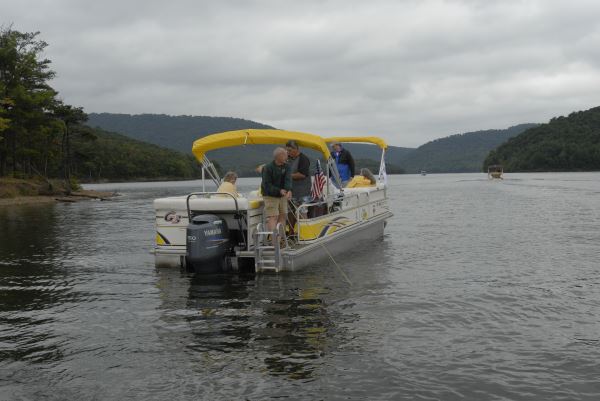Those new to boating may not realize just how many options they have when it comes to selecting an anchor. Many decide to narrow their options based on storage space and convenience or mere affordability, which can lead to frustration if the anchor you choose doesn’t get the job done right. To avoid mistakes like these, it helps to consider the following factors when choosing an anchor.
 Boat Size & Weight
Boat Size & Weight
As a general rule, the longer and heavier your boat, the larger and heavier your anchor will need to be. If lugging a heavy anchor around seems like a problem, consider purchasing a lighter-weight option that can still do the job, such as a Danforth or fluke anchor or others of a similar style, which have incredible holding power for their small size and minimal weight.
If you happen to have your eye on an anchor that falls into the heavier category, don’t immediately eliminate the option. The benefits of the particular anchor just may outweigh its weight. Definitely don’t opt for an anchor that’s too small for your boat in the name of convenience. At the end of the day, what matters most is that you have a sufficient anchor for your size boat.
%20(12).JPG_600.jpg) Water Bottom Conditions
Water Bottom Conditions
The type of bottom conditions in the waters you frequent is one of the most important factors to consider when selecting an anchor. Does your local river channel have a muddy or rocky bottom? Do you spend a lot of time on a lake with weeds or grass, or are you dealing with more of a clay-like bottom?
Every anchor is designed to work best with certain types of bottom conditions. The curved flukes of a claw anchor may work well for catching large rocks or boulders but not so well for grass or clay-like bottoms. The pointed nose of a plow anchor is known for its holding power in packed sand, but not so much in softer bottoms. To be on the safe side, it never hurts to have more than one type of anchor on hand so you’re always prepared.
Weather Conditions
In calm waters and fair weather, smaller and lighter weight anchors, or “lunch hooks,” are adequate for short anchorages. It’s a good idea to carry a heavier anchor or “working anchor” for windy conditions or longer anchorages. Using two anchors at one time can also offer a more secure hold when you want to be sure your boat won’t move, such as near a crowded marina.
As previously mentioned, it’s never a bad idea to have more than one type or size anchor on hand, just to make sure you’re covered for fair weather or fierce.
Types of Anchors
While there are many types of anchors on the market with new varieties coming out all the time, understanding some of the basic types along with their strengths and weaknesses can help you make the best choice for your needs.
%20(11).jpg_600.jpg) Fluke
Fluke
Danforth or fluke-style anchors are highly popular among recreational boaters for their lightweight design and incredible holding power. They fold flat and make for easy storage. Their sharp, angled arms cut and dig deep into waterbeds, making these anchors most effective in hard mud or sand but not so much in rocky or grassy areas.
%20(5).jpg_600.jpg)
Plow
Plow anchors include the traditional Delta-style anchor and QCR anchors as well as the more recent roll-bar style plow anchors such as those made by Rocna or Mantus. Due to their low center of gravity and self-righting geometry, these set quickly and securely. Plow anchors work best in rocky bottoms, weeds and grass, but don’t hold as well in soft bottoms.
%20(10).png_600.jpg) Claw
Claw
Claw anchors are versatile and hold in a variety of bottoms. They were designed to hold well in windy conditions, regardless of swinging or rotating of the boat. Of all traditional anchor types, these work best catching onto large rocks or boulders.
%20(12).jpg_600.jpg)
Mushroom
Mushroom anchors work best in soft bottom conditions where they can scoop sediment and create suction. They make good “lunch hooks” and secondary or backup anchors, but generally aren’t used as primary anchors.
%20(4).jpg_600.jpg)
Grappling
Grappling anchors are not known to have great holding power but store easily and are very convenient. They easily catch onto rocks and debris and work well as backup or emergency anchors.

An Anchor for Every Situation
Whatever your boating needs are, take comfort knowing there’s at least one good anchor option for your situation, if not several. If the variety of options still feels too large to narrow down to one, you really can’t go wrong having more than one type of anchor on board. Having the background knowledge to know which anchor to use and when will take you far and ensure your boat stays put when you want it to so you can enjoy your time on the water.

